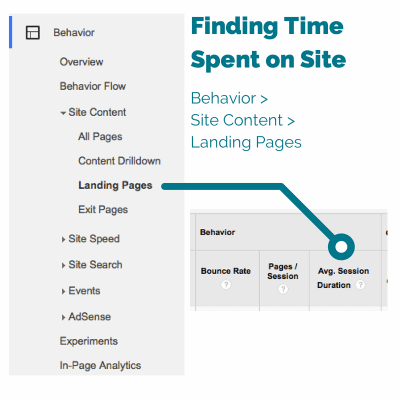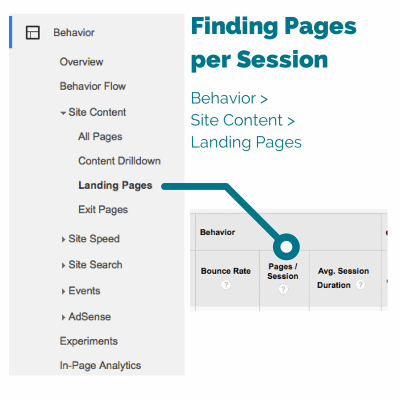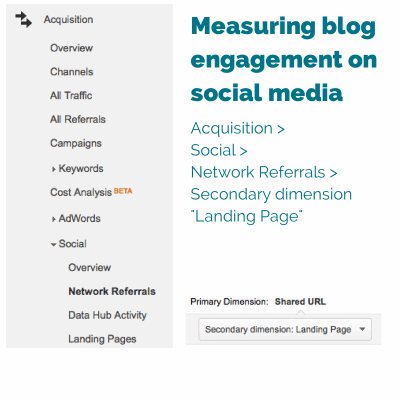There’s a lot of talk about the importance of content marketing, what qualifies as content marketing and what strategies work best for whom—but so few think about measuring until after the project is underway. This article discusses the bare minimum metrics you should be able to pull and measure for your content marketing success. No fancy tools or behemoth budgets needed—just a little good ol’ fashion work.
First, we have to stress to not start any new tactic without the analytics support behind it. Ian Laurie of Internet marketing agency Portent Inc. shares a great advice on creating the right kind of digital strategy. Most important part? If it can’t be measured, it shouldn’t be done.
This means in order to measure even these core five outcomes you need to ensure Google Analytics is properly installed on your website. That’s it! So let’s get started on what you should measure and how to gather it.
Time spent on site
If you’re thinking of getting involved in content marketing for your business, most likely it’s starting with regular blogging. A blog can fuel the rest of your content, such as guides, video, presentations, tweets and more. But how can you determine if your blog is actually being read?
Time spent on site (or “attention minutes”) is the best indicator in Google Analytics—as more time spent on a page typically correlates to individuals taking the time to read it.
Here is an example from our own Bop Blog:
How Twitter Advertising is Beating Out LinkedIn in B2B Lead Generation – 2:16
5 Reasons Responsive Web Design Improves SEO – 1:00
What Is A Session? A Look At The Google Analytics Change – 00:08
Two minutes? 30 seconds? Seems like small potatoes overall, but when you consider that it takes an average adult one minute to read 300 words (and our blog posts average around 500 words) if a visitor is spending more than a minute on the page it’s a good indication they’re absorbing some of your writing.
Here’s a step by step on how to pull the metric in Google Analytics:

Pages per session
In addition to measuring the time spent on a particular page, it’s important to also track if the content on your page is enticing a visitor to explore more of your website. This could mean reading other posts, resource pages or your services pages.
A primary goal of content marketing is to build trust and credibility before trying to sell your products or services, so if a user is investing time in researching your business and understanding your brand—they’re becoming an interested prospect.
Here are some examples from Bop Blog posts:
Create A Better Editorial Calendar – 3.67 pages per session
5 Reasons Responsive Web Design Improves SEO– 1.62 pages per session
How Twitter Advertising is Beating Out LinkedIn in B2B Lead Generation – 1.58 pages per session
Note that two of the blog posts above that received some of the highest time spent on site fall behind in pages per visit. If driving visits to other pages on your website is more important, examine what blog posts are accomplishing this goal and figure out any common trends.
Here is how you can pull pages per visit on Google Analytics:

Social media engagement
If your business shares original content on social media (which you should at least focus on one platform, if not multiple), then discover what content is receiving the most shares and clicks on those platforms. These metrics shouldn’t be observed in a vacuum, as there is a lot of data showing that social shares don’t always equal high readership. Instead, pulling time spent on site and pages per session in conjunction with this social media determines if the blog posts that are being shared are actually being read.
For example, “How Twitter Advertising is Beating Out LinkedIn in B2B Lead Generation” is performing well in time spent on site and pages per session, but when looking at sharing through Twitter, the performance metrics are lower. Pages per session are at 1.29, but average session duration is 00:02. Pulling the data with social media as the referral source (instead of another website, direct or organic visits), can show you what content is of interest to your followers.
You can find find more in-depth social media measurement on SlideShare, but to pull this specific metric do the following:

Leads generated
This requires some big picture thinking and wrangling of multiple platforms. If you’re a B2B business that still conducts most sales over the phone, it becomes even more complicated.
A good place to start is your website. If you have important calls to action on your website that you want an individual to make—such as signing up for a newsletter, downloading a guide or completing a contact form—then track these conversions by setting up Google Analytics Goals.
Once all of these goals are completed, you can track the referral path of each conversion and determine if the referral source produces qualified or unqualified prospects.
Shortening of the sales cycle
A major pain point in B2B lead generation is the length of time it takes from discovery to purchase. Content marketing is a great tactic to shorten this process, most notably between the discovery and consideration phases.
This is another “big picture” and complicated metric to measure, but keeping the lines of communication open with your sales team and providing them with relevant content along the way will improve content long-term. To help, ask your sales team some of the following questions:
- Is the content attracting the wrong type of prospect (e.g. seeking different services, needs additional education, etc.)?
- Are there common misconceptions of our business among prospects (e.g. understanding of unique value proposition, service delivery or other)?
- What common questions are prospects asking that you need support answering?
These questions can pull information on what content is currently working and what new content needs to be delivered.
Take away
Measuring the performance of content marketing can become overwhelming with the many options (and tools) available. But the above five metrics are a good first step to setting a baseline and mapping out where your time and resources should be put moving forward.



